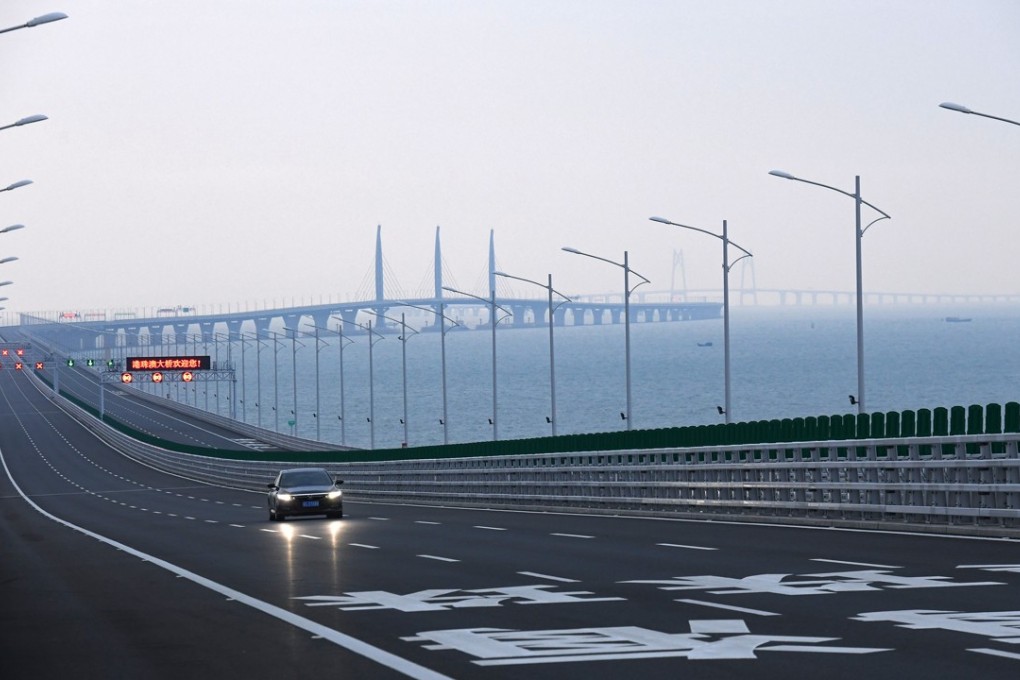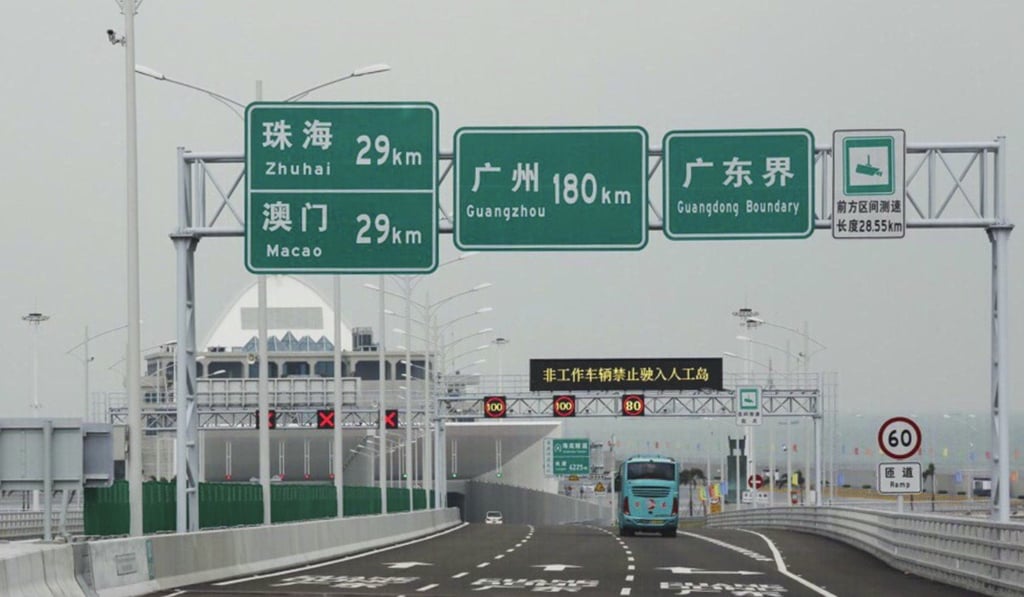Exclusive | China tests facial recognition at border crossing of Hong Kong-Zhuhai-Macau Bridge
- Facial recognition and fingerprint matching being tested at Zhuhai border crossing of world’s longest bridge
- AI-backed system can complete immigration clearance in under a second with up to 99.5 per cent accuracy, according to technology supplier Intellifusion

Hong Kong drivers travelling to the mainland via the newly opened Hong Kong-Zhuhai-Macau Bridge may in future leave their home return permits at home as the Chinese authorities test a combination of facial recognition and fingerprint analysis to speed up border crossings.
High-resolution cameras, fingerprint matching and thermal-scanning technology are now being deployed for one immigration lane at the border control in Zhuhai, according to Shenzhen-based artificial intelligence firm Intellifusion, which is supplying the technology.
The driver will be cleared to proceed if the fingerprints, facial image and car license-plate images match pre-registered information in the immigration database, without the need to show the ID card issued by mainland authorities to Hong Kong permanent residents for cross-border travel.

The new technology is expected to roll out soon for Hong Kong’s cross-border truck and bus drivers as their personal information, including fingerprints and facial images, are already stored in the mainland immigration system, Wang Jun, director of marketing solutions at Intellifusion, said in a telephone interview on Wednesday.